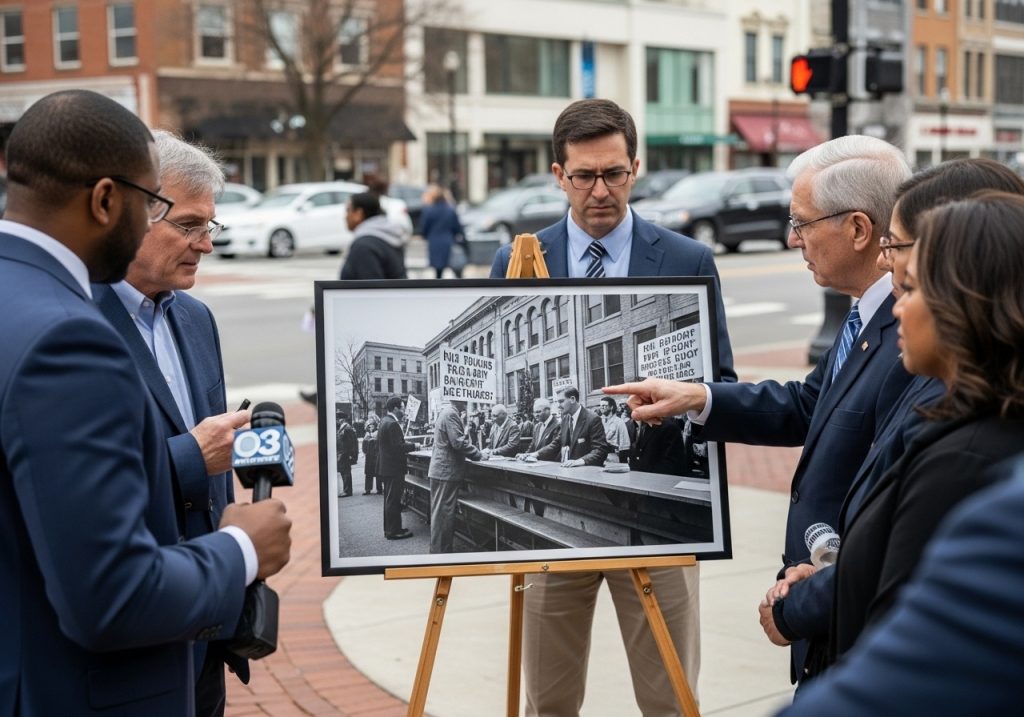Early Foundations and Colonial Beginnings
Native Presence and European Settlement
Long before it was known as Greensboro, the region that would become this modern North Carolina city was home to Native American tribes, particularly the Saura. These early inhabitants thrived on the region’s fertile land, abundant wildlife, and natural waterways. In the 1700s, European settlers, primarily of Scotch-Irish and German descent, began moving into the Piedmont area of North Carolina, drawn by the promise of land and opportunity. By the mid-18th century, this area had become a vibrant agricultural community, known for its rolling hills and robust farming economy.
Founding and Naming
In 1808, Greensboro was officially established and named in honor of General Nathanael Greene, a hero of the American Revolutionary War. General Greene had led Patriot forces in the pivotal Battle of Guilford Courthouse in 1781, just a few miles from the current city center. Although the British won that battle, they suffered significant losses, weakening their control in the South and setting the stage for American victory in the war. The founding of Greensboro was part of a broader movement in the early 19th century to establish centralized county seats in North Carolina. The city was laid out in a grid pattern and quickly grew as a center for local government and commerce.
The Rise of Industry and Civil War Era
Cotton, Railroads, and Economic Growth
By the mid-19th century, Greensboro’s economy began shifting from purely agricultural to industrial. The construction of the railroad through the city in the 1850s transformed it into a transportation and trade hub. Cotton mills and textile manufacturing soon followed, bringing jobs and growth. The presence of the railroad also made Greensboro strategically important during the Civil War. It served as a temporary headquarters for the Confederate government in April 1865 after the fall of Richmond, Virginia. When General Joseph E. Johnston surrendered to General Sherman near Greensboro, it marked one of the final significant surrenders of the Confederate army.
Post-War Reconstruction and the Growth of Education
After the war, Greensboro slowly rebuilt and began to thrive again. The city emphasized education as a cornerstone of its recovery and future development. Institutions like Bennett College (founded in 1873) and the University of North Carolina at Greensboro (established in 1891 as a women’s college) were central to this new vision. The late 19th and early 20th centuries brought new investment, urban development, and a diversified economy.
20th Century: Civil Rights and Cultural Renaissance
Textile Capital and Urban Expansion
During the early 1900s, Greensboro cemented its reputation as a textile powerhouse. Companies like Cone Mills led the nation in denim and flannel production. The city’s economic success attracted workers and spurred a building boom, with new neighborhoods, schools, and commercial areas expanding outward from the city center.
Birthplace of Civil Rights Momentum
Greensboro became a focal point in the American Civil Rights Movement. On February 1, 1960, four African American college students from North Carolina A&T State University staged a sit-in at the whites-only lunch counter at Woolworth’s in downtown Greensboro. Their peaceful protest ignited a nationwide movement for desegregation and social justice. The original Woolworth building is now the International Civil Rights Center & Museum, a landmark of American history.
Modern Greensboro: Innovation and Diversity
From Industry to Innovation
In recent decades, Greensboro has diversified beyond textiles into sectors like logistics, aviation, and biotechnology. The city is part of the “Piedmont Triad” with Winston-Salem and High Point, creating a robust regional economy. While manufacturing still plays a role, Greensboro has positioned itself as a center for higher education, technology, and culture.
A City of Heritage and Progress
Today, Greensboro embraces its rich history while forging a path forward. With its numerous colleges and universities, a thriving arts scene, and a strong commitment to civil rights and inclusion, the city remains one of North Carolina’s most vibrant and historically significant urban centers.
